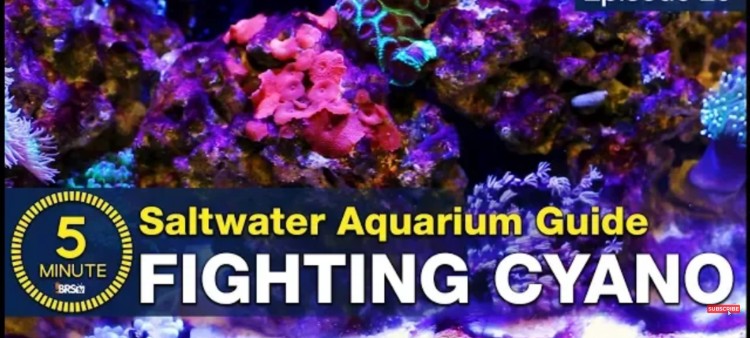How to BEAT red cyanobacteria slime algae
- Jan 16, 2022
- Anshika Mishra
- 429 0 0

It is time to kick Cyano or those ugly red slims out of the reef tank!
If you are reading this, chances are you have some funky red slime growing in your reef tank, and you cannot seem to get rid of it. But, then, you are in the right place!
Introduction to the Red Slime
The red slime in your tank could either be Cyano or diagnosis. In this article, we are focusing don't eh Cyano red slime, which is fairly easier to beat. However, most of these slimes look similar, and identifying them correctly is valuable for the most advanced approaches of reefers. But, correctly identifying bacteria and protozoa is just outside the scope of the first year of owning a fish tank.
Cyano is generally red slime that can be stringy or slime the coat surfaces. On the other hand, Dinos tend to be brown and more snot-like with lots of bubbles. However, Cyano is by far the most common. If you are having a hard time accepting the difference, treat it like a Cyano because it is the easiest to treat.
In the past, almost all the conversations were related to nutrients like nitrates and phosphates and poor maintenance fueling these slimes, not because there is a lot of evidence suggesting that but more so just because high nutrients sounded plausible.
Well, it could be a case of a poorly-maintained tank. However, elevated nitrate or phosphate is a direct cause of Cyano and for two reasons. First, Cyano outbreaks occur in tanks with both high and low phosphate levels. Second, more importantly, reducing nitrate or phosphate is never an effective solution for treating or eliminating Cyano.
If it is not an effective component of the solution, the elevated nutrient debate is really of minimal value. A better way to think of this is good maintenance in a well0cared-for, stable system that is sometimes associated with a good nitrate or phosphate level as a component of that good maintenance, or sometimes a solution on its own.
So, less chase the number and overall approach to good maintenance and water quality in our tanks. That leads us to step one of our approaches:
Get Back to the Basics
Water Change
Follow the general good maintenance practice outlined on our website and wait it out. Often the issue will go away on its own. Good maintenance, in this case, primarily keeping the rock surface clean, as well as good feeding habits, but also means keeping that skims running optimally and doing your water changes.
This is a good time to test nitrate and phosphate. First, make sure they are not off the charts. If the nitrates and phosphates are off the chart, there are a dozen reasons why you should fix that, even if it won't solve this issue. This is not the time to try anything cute, like carbon dosing, brand new refugium, or filter media to get the nutrients down. Go on with the water changes.
Do three to four 30% water changes over the next couple of weeks and get them down. If the nitrates and phosphates are absolutely zero, that can also cause issues. So, start feeding a bit more, reduce filtration, reduce lighting period, or what the skimmer collects until you get a reading. Anything above absolute zero is enough.
The only addition in the system to consider is additional powerheads at this time because the additional flow is generally just good for the entire tank, eliminates dead spots, or even flushes the surface and can solve.
Waiting out is a better option. If the slime is not bothering corals or harming anything, give it some time and see how your increased approach to maintenance goes. This is where step two comes in. If waiting isn't an option and Cyanos are actually hurting corals, it is time to up the game.
Dosing
Cyano outbreak is still a reasonably controllable phase, and we suggest doing some organisms with MicroBacter-7, Dr. Tim's Waster-Away, or KZ's Cyano Clean, which even is your favorite brand. Unfortunately, it is hard to share the exact mechanism, how the heterotrophic bacteria in these products work.
But some are believed to out-scavenge nutrition like out-compete surface area and territory, and some may even be aggressive enough to consume the Cyanobacteria. But, in any case, most of these have been used to beat Cyano effectively for many reefers.
When you use these types of competitive bacteria products, you need to understand it took months for the Cyano to out-compete the organisms in the tank and become the problem. Likewise, it will take a couple of months for the bacteria to out-compete the Cyano now.
However, if you have what amounts to a Cyano outbreak that is actively killing corals, you cannot handle looking at it anymore this way and just need to solve it today. But then, Chemi-clean or Red Slime Stain Removes are awesome at removing Cyaon from the tank.
These are often treated as the last resort to the underlying problems, but if you have already followed step one with a good solid maintenance plan for your tank, these types of treatments can be like a reset button that gives things back on track.
When used as directed on an otherwise healthy tank, they can remove the Cyano in a single or a few doses over a day or two. While there is a risk to doing anything to the tank, negative results are exceedingly rare. However, nothing good in the reef tanks happens overnight. So, don't be surprised if the Cyano comes back over time, so be patient.
But, if none of the above are working, you are very likely to be dealing with Dyano, and it is time to go for a much more aggressive approach.
Happy Reefing!






About author